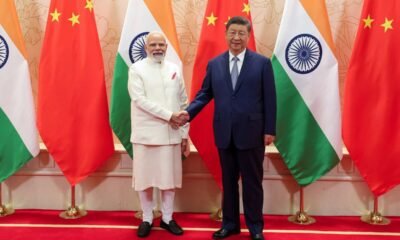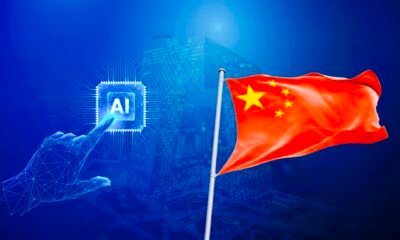WASHINGTON (AP) — President Donald Trump singled out Brazil for import taxes of 50% on Wednesday for its treatment of its former president, Jair Bolsonaro, showing that personal grudges rather than simple economics are a driving force in the U.S. leader’s use of tariffs.
Trump avoided his standard form letter with Brazil, specifically tying his tariffs to the trial of Bolsonaro, who is charged with trying to overturn his 2022 election loss. Trump has described Bolsonaro as a friend and hosted the former Brazilian president at his Mar-a-Lago resort when both were in power in 2020.
“This Trial should not be taking place,” Trump wrote in the letter posted on Truth Social. “It is a Witch Hunt that should end IMMEDIATELY!”
There is a sense of kinship as Trump was indicted in 2023 for his efforts to overturn the results of the 2020 U.S. presidential election. The U.S. president addressed his tariff letter to Brazilian President Luiz Inacio Lula da Silva, who bested Bolsonaro in 2022.
Bolsonaro testified before the country’s Supreme Court in June over the alleged plot to remain in power after his 2022 election loss. Judges will hear from 26 other defendants in the coming months. A decision could come as early as September, legal analysts say. Bolsonaro has already been barred from from running for office until 2030 by the country’s electoral authorities.
Brazil’s vice president, Geraldo Alckmin, said he sees “no reason” for the U.S. to hike tariffs on the South American nation.
“I think he has been misinformed,” he said. “President Lula was jailed for almost two years. No one questioned the judiciary. No one questioned what the country had done. This is a matter for our judiciary branch.”
For Trump, the tariffs are personal
Trump also objected to Brazil’s Supreme Court fining of social media companies, saying the temporary blocking last year amounted to “SECRET and UNLAWFUL Censorship Orders.” Trump said he is launching an investigation as a result under Section 301 of the Trade Act of 1974, which applies to countries with trade practices that are deemed unfair to U.S. companies.
Among the companies the Supreme Court fined was X, which was not mentioned specifically in Trump’s letter. X is owned by Elon Musk, Trump’s multibillionaire backer in the 2024 election whose time leading Trump’s Department of Government Efficiency recently ended and led to a public feud over the U.S. president’s deficit-increasing budget plan. Trump also owns a social media company, Truth Social.
Brazilian lawmakers allied with President Lula blamed Bolsonaro and two of his sons, congressman Eduardo Bolsonaro and Sen. Flávio Bolsonaro, for Trump’s action.
“Every justification to retaliate against Brazil is political, as if Bolsonaro was politically persecuted,” Sen. Lindbergh Farias, the whip of Lula’s Workers’ Party in the Senate, said on social media. The Bolsonaros “must be very happy to harm Brazil, our economy and our jobs.”
The Brazil letter was a reminder that politics and personal relations with Trump matter just as much as any economic fundamentals. And while Trump has said the high tariff rates he’s setting are based on trade imbalances, it was unclear by his Wednesday actions how the countries being targeted would help to reindustrialize America.
The tariffs starting Aug. 1 would be a dramatic increase from the 10% rate that Trump levied on Brazil as part of his April 2 “Liberation Day” announcement. In addition to oil, Brazil sells orange juice, coffee, iron and steel to the U.S., among other products. The U.S. ran a $6.8 billion trade surplus with Brazil last year, according to the Census Bureau.
Trump initially announced his broad tariffs by declaring an economic emergency, arguing under a 1977 law that the U.S. was at risk because of persistent trade imbalances. But that rationale becomes problematic in this particular case, as Trump is linking his tariffs to the Bolsonaro trial and the U.S. exports more to Brazil than it imports.
Trump also targeted smaller trade partners
Trump also sent letters Wednesday to the leaders of seven other nations. None of them — the Philippines, Brunei, Moldova, Algeria, Libya, Iraq and Sri Lanka — is a major industrial rival to the United States.
Most economic analyses say the tariffs will worsen inflationary pressures and subtract from economic growth, but Trump has used the taxes as a way to assert the diplomatic and financial power of the U.S. on both rivals and allies. His administration is promising that the taxes on imports will lower trade imbalances, offset some of the cost of the tax cuts he signed into law on Friday and cause factory jobs to return to the United States.
Trump, during a White House meeting with African leaders, talked up trade as a diplomatic tool. Trade, he said, “seems to be a foundation” for him to settle disputes between India and Pakistan, as well as Kosovo and Serbia.
“You guys are going to fight, we’re not going to trade,” Trump said. “And we seem to be quite successful in doing that.”
Trump said the tariff rates in his letters were based on “common sense” and trade imbalances, even though the Brazil letter indicated otherwise. Trump suggested he had not thought of penalizing the countries whose leaders were meeting with him in the Oval Office — Liberia, Senegal, Gabon, Mauritania and Guinea-Bissau — as “these are friends of mine now.”
Countries are not complaining about the rates outlined in his letters, he said, even though those tariffs have been generally close to the ones announced April 2 that rattled financial markets. The S&P 500 stock index rose Wednesday.
“We really haven’t had too many complaints because I’m keeping them at a very low number, very conservative as you would say,” Trump said.
Tariff uncertainty returns with Trump’s letters
Officials for the European Union, a major trade partner and source of Trump’s ire on trade, said Tuesday that they are not expecting to receive a letter from Trump listing tariff rates. The Republican president started the process of announcing tariff rates on Monday by hitting two major U.S. trading partners, Japan and South Korea, with import taxes of 25%.
According to Trump’s Wednesday letters, imports from Libya, Iraq, Algeria and Sri Lanka would be taxed at 30%, those from Moldova and Brunei at 25% and those from the Philippines at 20%. The tariffs would start Aug. 1.
The Census Bureau reported that last year the U.S. ran a trade imbalance on goods of $1.4 billion with Algeria, $5.9 billion with Iraq, $900 million with Libya, $4.9 billion with the Philippines, $2.6 billion with Sri Lanka, $111 million with Brunei and $85 million with Moldova. The imbalance represents the difference between what the U.S. exported to those countries and what it imported.
Taken together, the trade imbalances with those seven countries are essentially a rounding error in a U.S. economy with a gross domestic product of $30 trillion.
The letters were posted on Truth Social after the expiration of a 90-day negotiating period with a baseline levy of 10%. Trump is giving countries more time to negotiate with his Aug. 1 deadline, but he has insisted there will be no extensions for the countries that receive letters.
The president threatened additional tariffs on any country that attempts to retaliate.
___
Associated Press writers Mauricio Savarese in Rio de Janeiro, David McHugh in Frankfurt, Germany, and Eileen Ng in Kuala Lumpur, Malaysia, contributed to this report.










































